How Alaska’s Historic Roadhouses Are Standing the Test of Time
The multipurpose lodgings along trails and rivers capture the state’s pioneering culture and spirit
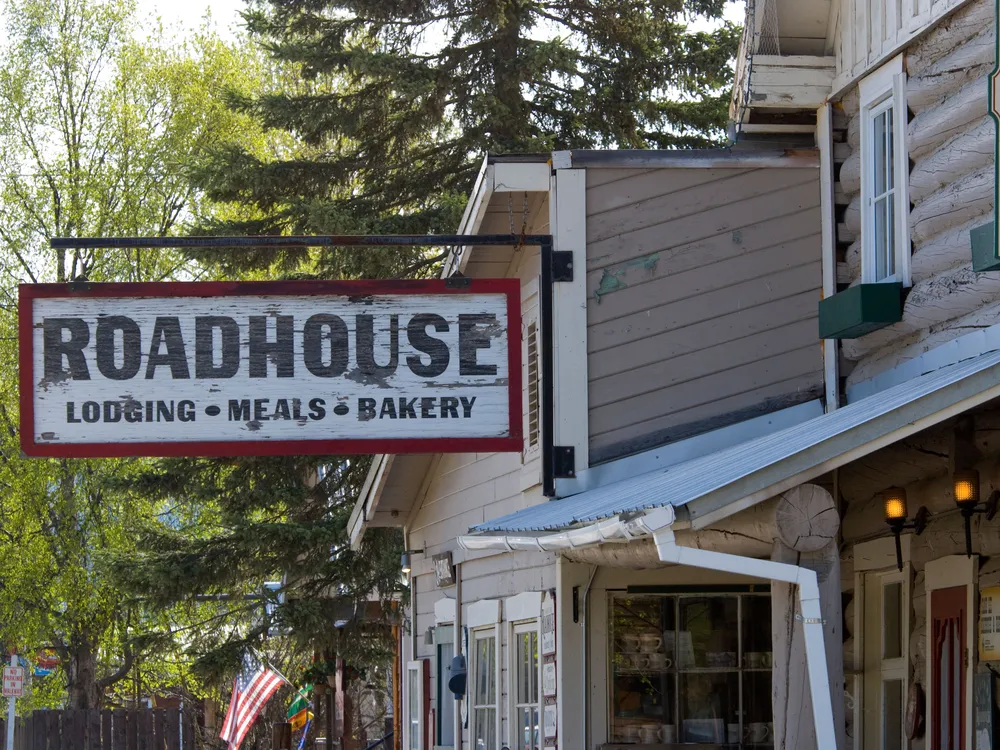
Mary Knight, a dog musher in Fairbanks, Alaska, had been looking for an off-the-grid property that she could eventually use for sledding tours, when she happened upon Tolovana Roadhouse. Built in 1924, the century-old property sits in the wilderness at the confluence of the Tanana and Tolovana Rivers, about 50 trail miles northwest of Nenana, the nearest city.
“In my seven or so years of looking at properties, there was nothing that checked off as many boxes as this one did,” says Knight.
Completely renovated by its former owner, the roadhouse had enough indoor space to accommodate small groups, was accessible by trail and was reachable from Fairbanks by less than a full day’s travel. The roadhouse also happened to be the initial transfer point in the Serum Run of 1925, a lifesaving transport of diphtheria antitoxin by dog sled that later inspired the Iditarod sled dog race.
“I wasn’t necessarily looking to purchase a place listed on the National Register for Historic Places,” says Knight, “but when it came up for sale, I jumped.”
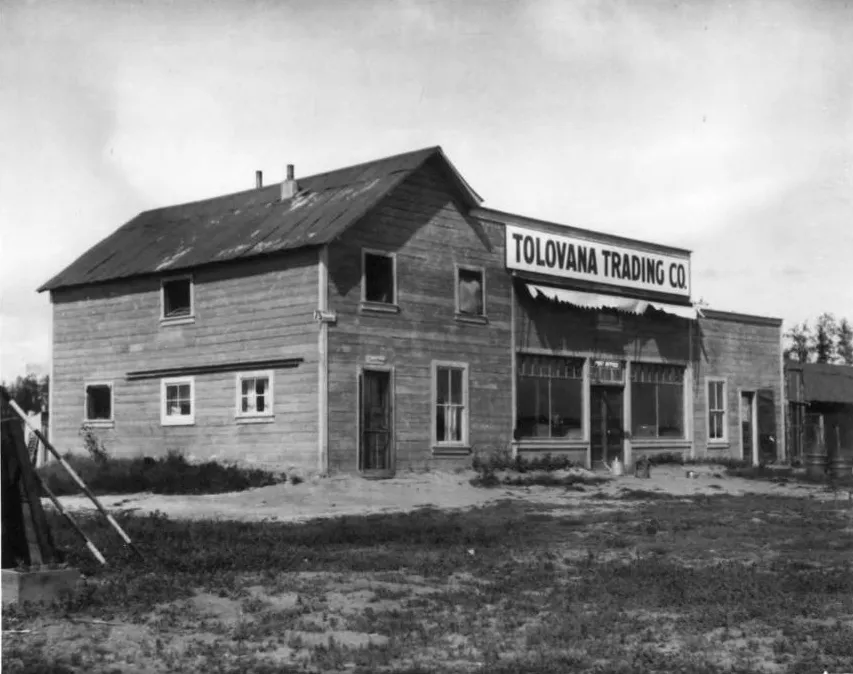
As it turns out, Tolovana Roadhouse was one of thousands (the exact number varies) of roadhouses that popped up along Alaska’s trails and rivers in the late 19th and early 20th centuries, providing food, bedding and comfort to the large number of trappers, gold miners and traders who’d arrived in the then-territory looking for their fortunes. These sometimes temporary—often permanent—lodgings played a huge role in the history of the Alaskan frontier, serving as one-stop shops for travelers arriving by dog team or stagecoach, or even on foot, through intense cold and snow. They were spaced every 15 to 20 miles along main routes like the Valdez-Fairbanks Trail, which provided the first overland access into much of Alaska’s interior, and the Iditarod Trail between Seward and Nome, and ranged from groups of tumbledown tents to two-story timber cabins where travelers could rent out rooms or individual bunk beds, send and receive mail, and dine on home-cooked meals, often served family-style at long, communal tables. Many had barns to shelter dogs and horses, and they doubled as everything from trading posts to makeshift hospitals and morgues. They were a lifeline for the Alaskan frontier.
However, with the opening of the Alaska Railroad in 1923, followed by the replacement of horse traffic with automobiles, travelers were able to go faster and farther, rendering many of the roadhouses obsolete. By the mid-20th century, the bulk of them had either been abandoned or fallen into disrepair.
Those that remain are a testament to Alaska’s pioneer ancestors and an essential part of the state’s Northern heritage. It’s one that many Alaskans, including Indigenous peoples and those—like Knight—who’ve made Alaska their home, would like to see preserved. Some are continuing their use as lodging and dining establishments, others are transforming them into museums, but nearly all would like to see them remain open to the public in some capacity. “The doors of Tolovana have never been locked,” says Knight, “because it’s always been a shelter for people traveling in adverse conditions. I want to make sure it stays this way.”
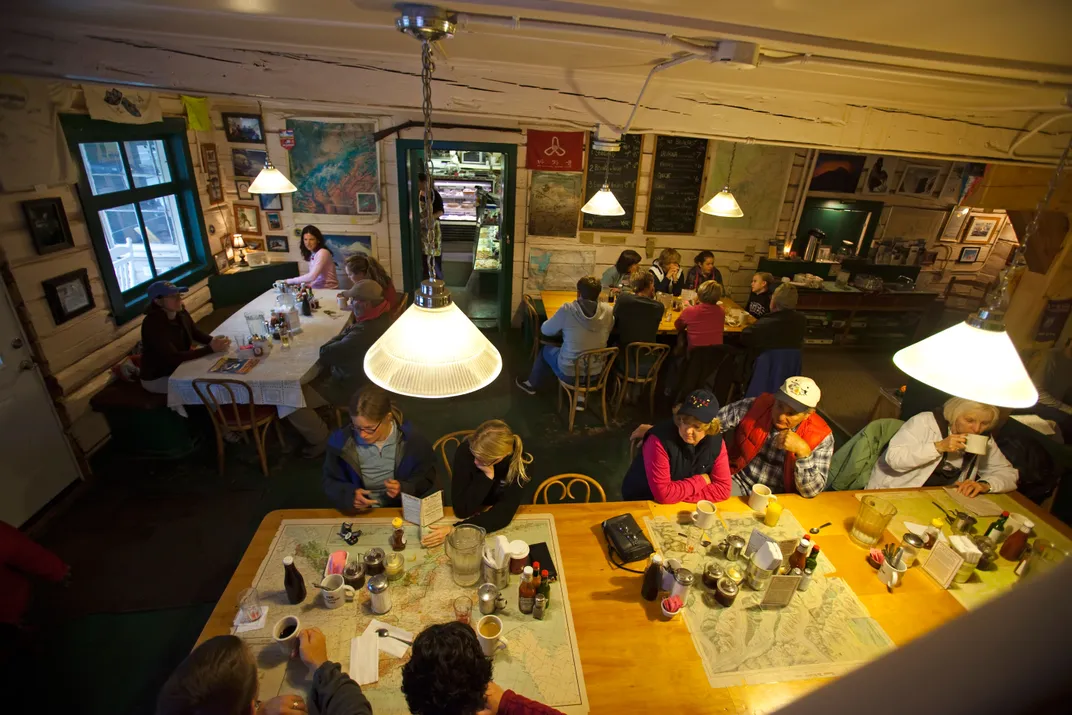
In her 2015 book Alaskan Roadhouses: Shelter, Meals and Lodging Along Alaska’s Early Roads and Trails, author Helen Hegener estimated that roughly three or four dozen original roadhouses were still standing. But she now believes that number might be closer to 100, or even twice that. “Alaska is a huge place, and the roadhouses were really everywhere,” she says. “Of course, many of the ones remaining are in various stages of neglect. It takes a herculean effort to save a roadhouse built of logs more than 100 years ago, most of which have been left to the ravages of time and weather.”
Knight can attest to these herculean efforts. Although Tolovana Roadhouse was turnkey when she purchased it, the lot had its challenges. “It was pretty apparent that the Tanana River, where the property sits, is eroding the shoreline to the point that the roadhouse will eventually fall in,” she says. Ice jams that block the river in winter start breaking up in spring, flooding the area behind it and creating a powerful current that can wreak havoc on the riverbanks. “It’s just a really unpredictable body of water,” she adds. Still, her desire to try to save the property and its heritage outweighed any discomfort she had over purchasing it. Instead, Knight has begun looking into requirements for moving the roadhouse away from the river without losing its historic designation. “I want to make sure that if the building remains intact it will always remain open for people in distress,” she says.
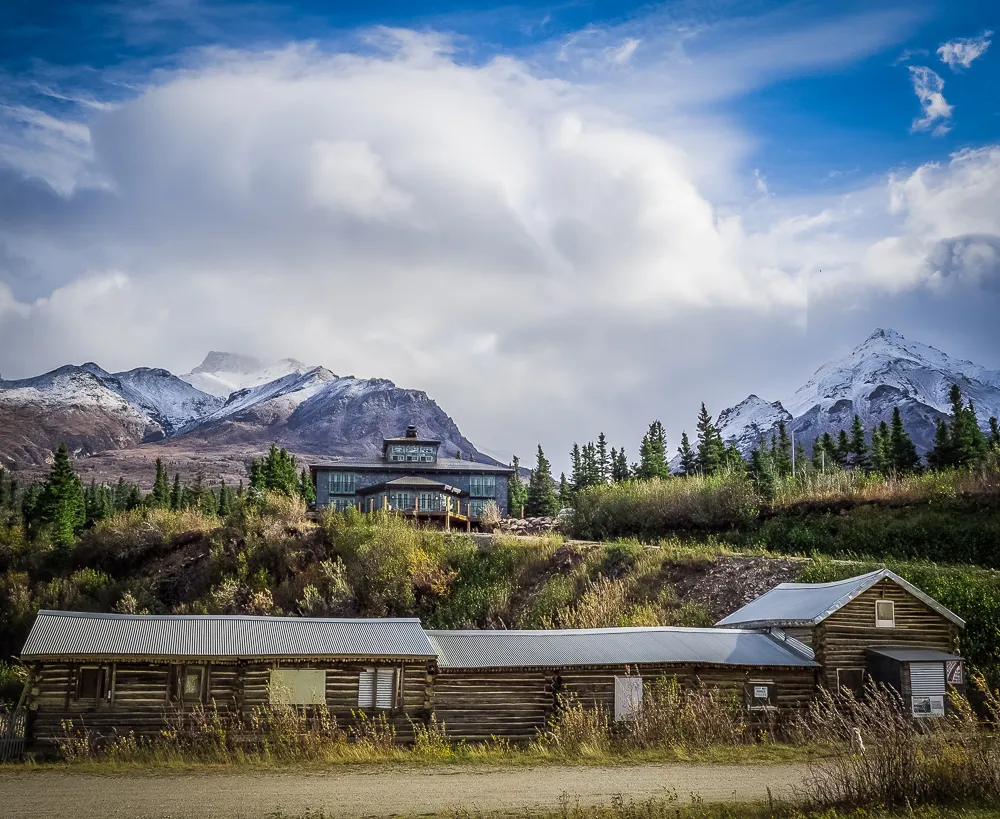
Knight also reached out to owners of some of Alaska’s other historic roadhouses for advice on available grants and federal funding. This includes Annie Hopper, co-owner of the luxury Lodge at Black Rapids and its Rapids Roadhouse, a spruce log structure that first opened around 1902 along the Valdez-Fairbanks Trail. Hopper and her then-husband purchased the secluded property in the early 2000s, inspired by author Jim Rearden’s 1998 biography, Alaska’s Wolf Man: The 1915-55 Wilderness Adventures of Frank Glaser. An adventure-seeking mountain man who traversed Alaska “on foot, by wolf-dog team and, eventually, by airplane,” according to Rearden, Glaser was also an early owner of the Rapids Roadhouse.
“After I read the book, I thought, ‘This place has to be saved,’” says Hopper. The couple immediately got the roadhouse—abandoned since the 1980s—listed on the National Register of Historic Places, and once they were able to access state money available for the preservation of historic properties, they started renovating. “A place like the Rapids Roadhouse probably took about two to three weeks to construct,” says Hopper, “but it took us 20 years to restore.”
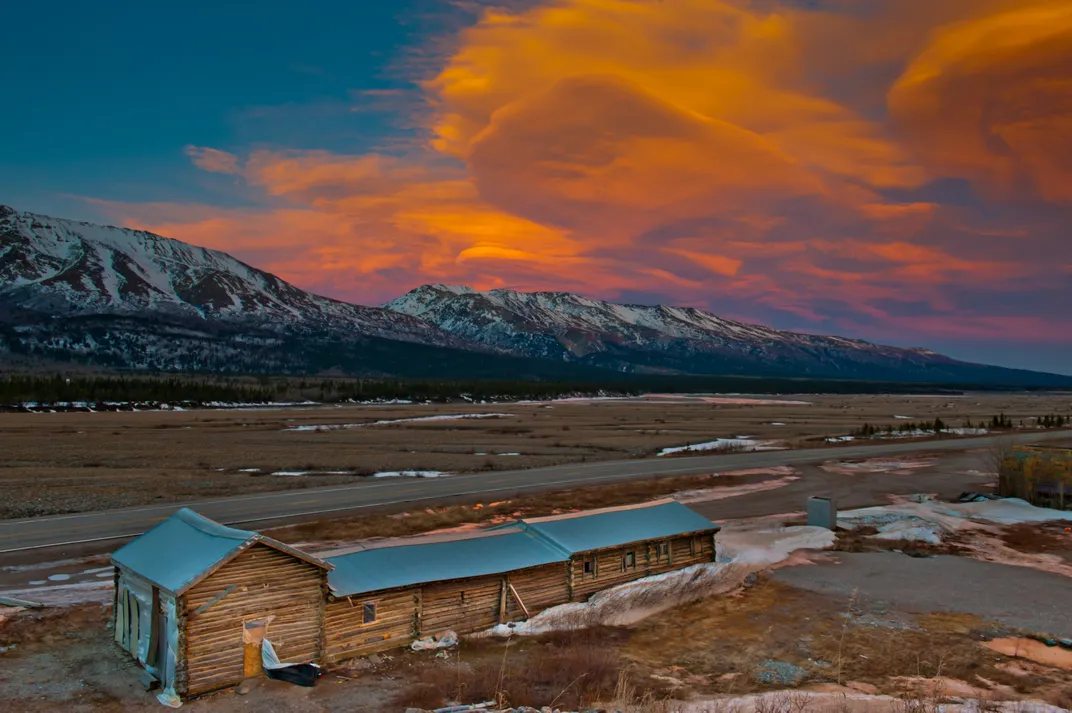
Today, the structure sports a new roof, windows and shutters, and plywood flooring with a surrounding rat slab, which is basically cement filling that keeps any wildlife from getting inside. A small mountaineering museum displays ice axes and climbing ropes in one section of the space and some old photographs of Alaska’s gold rush days and the Trans-Alaska Pipeline in another.
Hopper and her former husband have also begun hosting an annual music festival each July, with a portion of the profits set aside for further restoration of the roadhouse. “We have about ten million dreams for the place,” she says, including an art gallery and an outdoor center where they can rent out gear, though Hopper says they’re leaning more toward a coffee shop and larger museum.
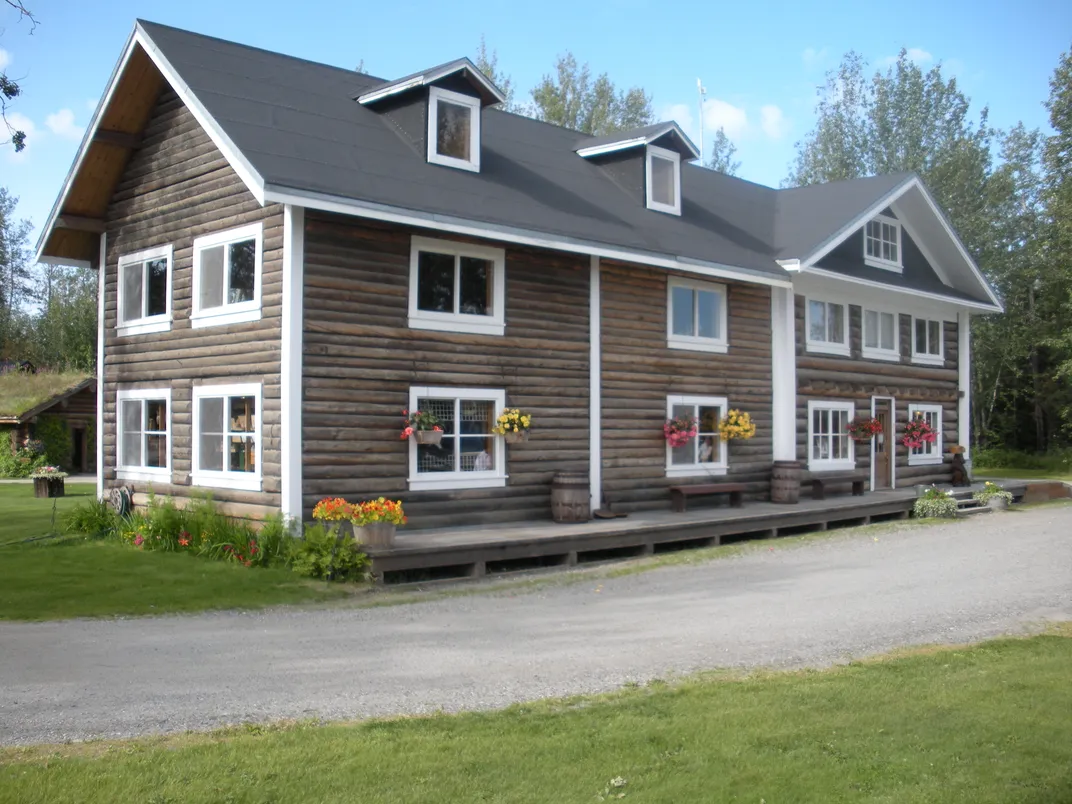
Several other historic roadhouses across Alaska have been preserved and are open to visitors. Built in 1909, Rika’s is a riverside roadhouse that sits just off the Richardson Highway (the former Valdez-Fairbanks Trail) in the Fairbanks area. Today, it’s home to the Delta Historical Society Museum, which features artifacts from Alaskan life, including 1920s to 1930s period furnishings and a restored floor made of old kerosene crates. Just nine miles south is Sullivan Roadhouse, a restored log structure displaying turn-of-the-century cookware, an oil-drum stove and private sleeping quarters recreated to give visitors an idea of what lodging here was like. Originally, the two roadhouses were 16 miles apart, but historians moved the latter to its current location in 1997.
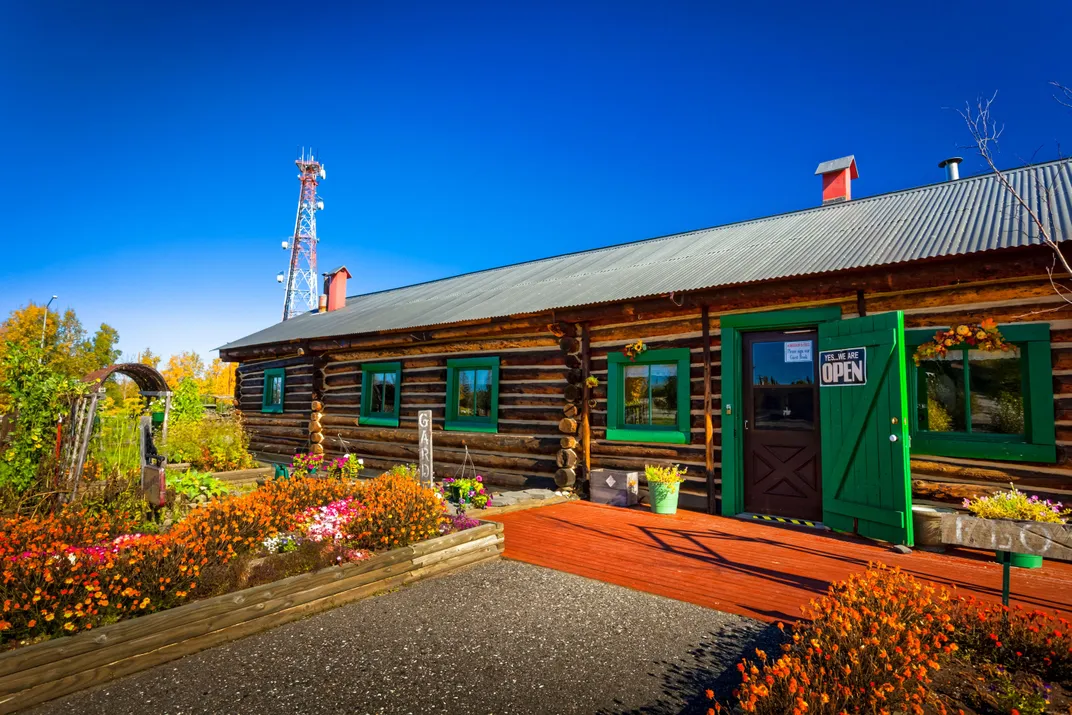
One of Alaska’s best-known historic roadhouses is Talkeetna Roadhouse, a 1917 two-story timber frame lodging that sits 150 miles south of the entrance to Denali National Park and Preserve. With a seasonal on-site bakery serving up hearty cinnamon rolls, buttery pastries and strong cups of coffee, and overnight accommodations that are available year-round, Talkeetna is a mainstay among travelers looking to swap stories and relive the roadhouse experience—something Hopper calls an “Alaska tradition.”
“So many people associated with the roadhouses have over time become larger-than-life characters,” says Hopper. There’s the story of dog musher Wild Bill Shannon, who was part of the 1925 Serum Run. When Shannon set out on his leg of the delivery, the temperature was 50 degrees below zero Fahrenheit. By the time he arrived at a roadhouse where he could rest, his face had become frostbitten, and three of the dogs on his team were too worn out to keep going. Hopper also tells me about Emma Grace Lowe, another early owner of the Rapids Roadhouse who was one of the few women operating a profitable gold mine in Alaska. “She was tough,” says Hopper. “Women entrepreneurs back then were just so amazing. They did everything in dresses.”
Ultimately, the state’s remaining roadhouses serve as wonderful examples of Alaska’s pioneering culture and spirit. “Their very existence was evidence of the courageous men and women crossing a vast land filled with innumerable challenges,” says Hegener, “and in doing so laid the foundations of what today are Alaska’s highways, towns and communities.”
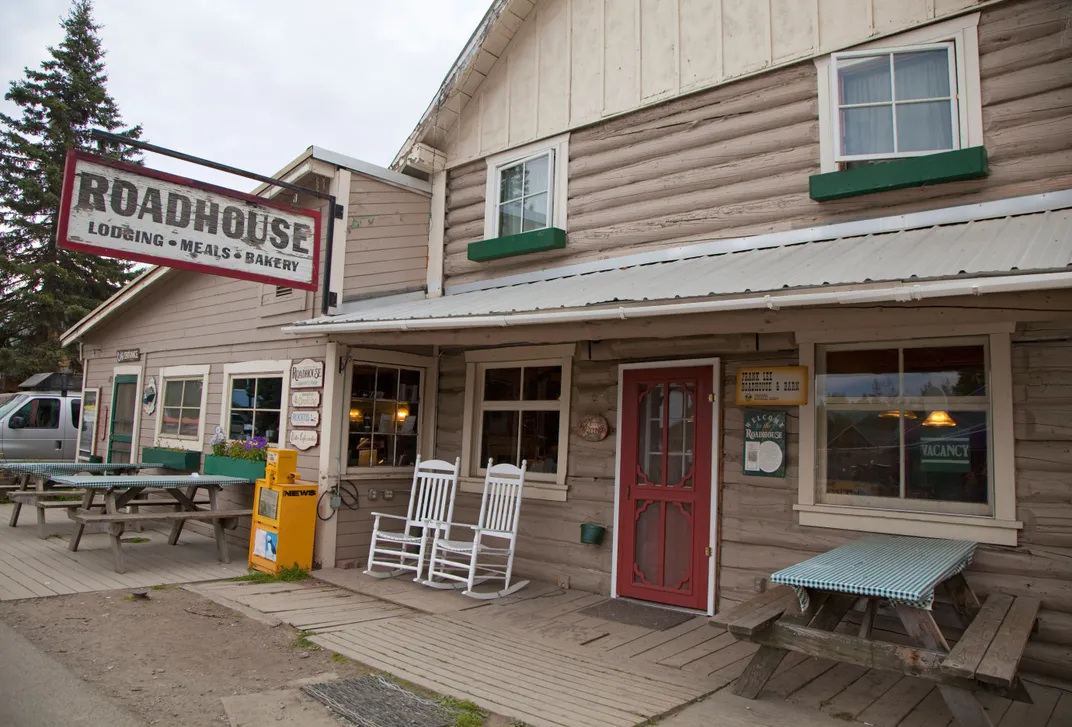
Planning Your Next Trip?
Explore great travel deals
Smithsonian magazine participates in affiliate link advertising programs. If you purchase an item through these links, we receive a commission.


